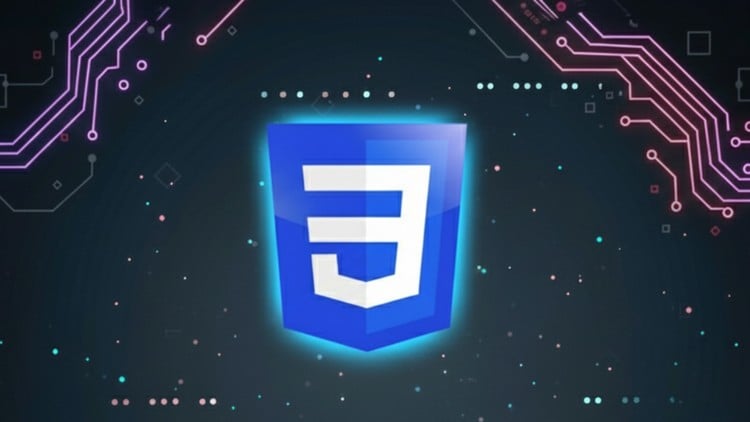
280+ CSS questions on selectors, Flexbox, and Grid. Perfect for web developers and passing technical interviews.
👥 1,101 students
🔄 September 2025 update
Add-On Information:
Note➛ Make sure your 𝐔𝐝𝐞𝐦𝐲 cart has only this course you're going to enroll it now, Remove all other courses from the 𝐔𝐝𝐞𝐦𝐲 cart before Enrolling!
-
Course Overview
- “CSS Practice Tests: 280+ Questions from Basics to Advanced” offers an intensive, hands-on practice regimen designed to thoroughly test and elevate your Cascading Style Sheets (CSS) proficiency.
- With over 280 expertly crafted questions, it spans the entire spectrum of CSS, from foundational concepts to advanced techniques.
- Ideal for web developers at any stage—solidifying basics, sharpening skills, or excelling in technical interviews—this course is perfect.
- It meticulously covers essential areas like precise CSS selectors, robust Flexbox layouts, and powerful Grid structuring.
- Engaging with these tests enhances theoretical understanding and critically improves practical problem-solving.
- This self-paced resource facilitates iterative learning, allowing efficient identification of weaknesses and reinforcement of strengths.
-
Requirements / Prerequisites
- Fundamental HTML Knowledge: A basic grasp of HyperText Markup Language (HTML) is essential, as CSS styles HTML documents. Comfort with common HTML tags is beneficial.
- Introductory CSS Familiarity: A rudimentary understanding of what CSS is and how it’s applied (e.g., basic properties like
color) will aid immediate engagement. - Access to a Web Browser and Code Editor: Any modern web browser and a text editor (VS Code) for potential code snippets will suffice.
- Motivation for Practice: A willingness to actively engage with questions, review concepts, and practice is crucial for maximizing learning outcomes.
- No Advanced Programming Experience: This course focuses exclusively on CSS; no prior JavaScript or complex programming paradigms are necessary.
-
Skills Covered / Tools Used
- Mastery of CSS Selectors: Deepen your understanding of element, class, ID, attribute, pseudo-class, pseudo-element selectors, and various combinators for precise element targeting.
- In-depth CSS Box Model Comprehension: Solidify knowledge of
margin,padding,border,content, andbox-sizingfor accurate element sizing and spacing. - Advanced Layout Techniques:
- Flexbox Proficiency: Gain expert control over one-dimensional layouts using
display: flex,flex-direction,justify-content,align-items,flex-wrap,flex-grow, andalign-self. - CSS Grid Expertise: Master two-dimensional layouts with
display: grid,grid-template-columns,grid-template-rows,gap,grid-auto-flow, andgrid-areafor complex structures.
- Flexbox Proficiency: Gain expert control over one-dimensional layouts using
- Fundamental Styling Properties: Reinforce knowledge of color systems, background properties, font families, text styling, and various CSS units.
- Positioning and Z-index: Practice questions covering
position(static, relative, absolute, fixed, sticky) andz-indexfor layering elements. - Responsive Design Fundamentals: Many layout and styling questions will implicitly test principles crucial for adaptable designs.
- Tools Used: Primarily a standard Web Browser for rendering and verifying styles, and any simple Code Editor for drafting solutions.
-
Benefits / Outcomes
- Significantly Boosted Confidence: Emerge with robust confidence in your CSS abilities, capable of tackling diverse styling and layout challenges.
- Exceptional Interview Preparedness: Gain a significant advantage in front-end technical interviews by mastering frequently asked CSS questions on Flexbox, Grid, and selectors.
- Sharpened Problem-Solving Skills: Develop a keen eye for diagnosing CSS issues and crafting efficient, effective solutions, enhancing your debugging workflow.
- Comprehensive Skill Validation: Objectively assess your CSS knowledge, pinpointing strengths and identifying specific topics requiring further study.
- Foundational Mastery for Modern Web Development: Establish a rock-solid understanding of CSS, an indispensable foundation for learning JavaScript frameworks and building complex user interfaces.
- Improved Code Quality and Efficiency: Learn to write more precise, maintainable, and optimized CSS, leading to better performing and more manageable web projects.
- Accelerated Career Growth: Equip yourself with in-demand, verifiable CSS skills highly valued by employers, paving the way for advanced roles in web development.
-
PROS
- Extensive Question Bank: Over 280 questions provide unparalleled breadth and depth for rigorous CSS practice, covering a vast array of topics.
- Structured Progression: Thoughtfully designed questions guide learners from basic principles to advanced concepts, ensuring a smooth and effective learning curve.
- Direct Interview Relevance: Specifically tailored to prepare individuals for technical interview CSS questions, making it an invaluable career asset.
- Focus on Modern Layouts: Emphasizes crucial modern CSS layout technologies like Flexbox and Grid, essential for contemporary web development.
- Flexible Learning: The self-paced format allows students to learn at their own convenience.
- Ideal for All Levels: Benefits beginners solidifying understanding and experienced developers filling knowledge gaps.
- Active Learning Approach: Promotes active problem-solving and application, which is more effective than passive content consumption.
- Skill Validation: Provides a clear mechanism for learners to validate CSS proficiency and track improvement.
- Targeted Practice: Questions are designed to test specific CSS properties or concepts, enabling focused learning and immediate feedback.
- Cost-Effective: Offers a concentrated way to gain extensive CSS practice.
-
CONS
- As a dedicated practice test course, it primarily focuses on assessment and reinforcement. Consequently, it may not include comprehensive theoretical lectures or extensive project-based applications, potentially requiring learners to consult supplementary resources for initial concept introduction or real-world implementation experience.
Learning Tracks: English,Development,Programming Languages
Found It Free? Share It Fast!